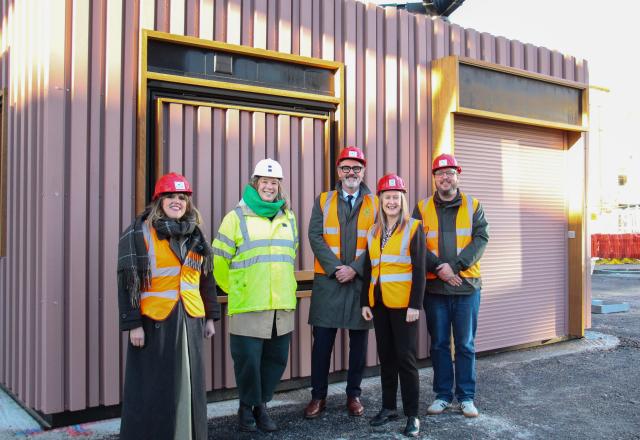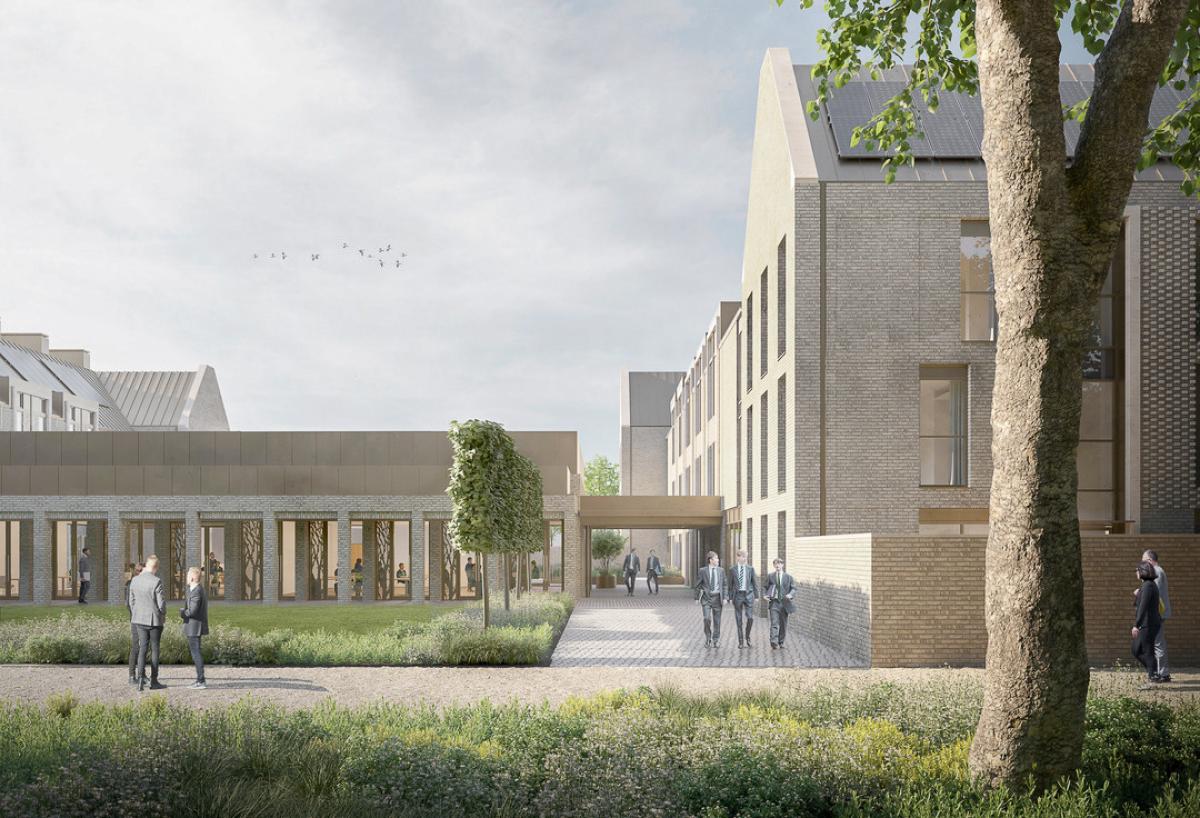
As part of the design process for two new, connected boarding houses at Uppingham School, we led a series of interactive workshops with the boarders, placing their experiences of boarding culture at the heart of the project.
What we heard was clear: that shared spaces matter. It’s where lifelong friendships are forged, and growing up is done away from family.
These insights directly informed the design. The rhythm and hierarchy of spaces reflect the realities of boarding life, supporting both communal living and personal retreat with a solution bespoke to Uppingham.
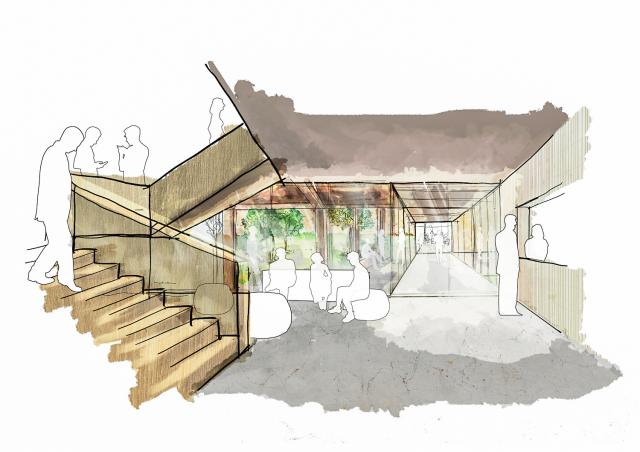

The brief
Uppingham School came to us with a clear ambition: to create two new boarding houses, Meadhurst and Farleigh, that would feel part of the school’s heritage but also bring something new. They wanted buildings that gave each house a strong identity, offered long-term value, and created a great place for students to live and connect.

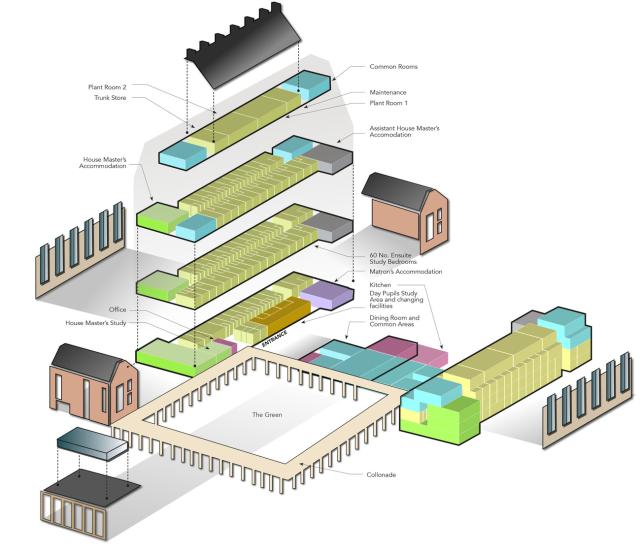
The masterplan
Our first steps on the project were to undertake an options appraisal and develop a suitable masterplan. We had a site with an existing boarding house, a listed building, and plenty of green space. It was in a largely residential area, a ten-minute walk from the school's teaching accommodation.
We considered how the design could support phased construction, how to retain a listed building in the new plans, and economies of scale in construction and maintenance.
Our preferred option created two new boarding houses, with shared design language and economies of scale in the masterplan, and individual personalities realised in the detail. The individual houses and Housemaster's accommodation are connected by a shared pavilion with dining, common rooms, and support facilities, all set within the landscaped grounds.
Design That Tells a Story
Working closely with the school, we explored how identity is expressed across the campus, from historic architecture to modern branding. We took inspiration from the crests and mottos of each house and translated those ideas into subtle architectural details. Nature-based symbols such as ferns and honeycombs were abstracted into perforated metal panels on the façades. These small details help the buildings feel personal and meaningful to the people who use them.
The houses are grouped around a new central green, with a shared dining pavilion at the centre. This green space is more than just landscaping; it gives the project structure, presence, and a real sense of place. It’s a space for daily life to unfold: movement, connection, and moments of calm.

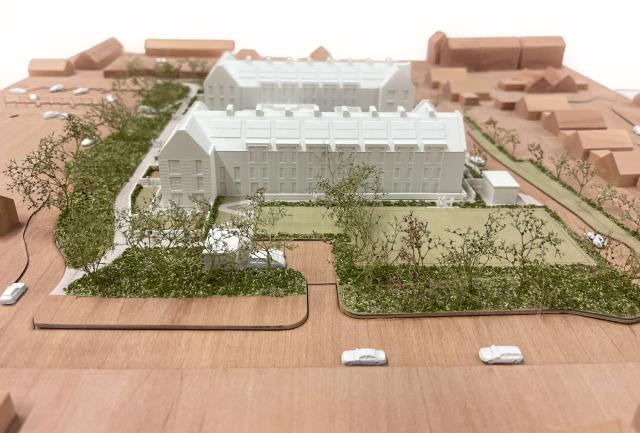
Materials with Purpose
We used a warm, simple palette of natural materials that draws directly from the character of Uppingham. Two distinct brick blends echo local stone colours, honey tones for one house and pale greys and creams for the other, helping them feel rooted in their surroundings.
These materials were chosen not just for their beauty, but for their durability and low maintenance. The result is architecture that feels timeless and built to last.


A conscious landscape
The setting is just as important as the buildings. We kept mature trees where we could and added new planting that will grow into a rich, green environment. A formal approach lined with pleached trees leads visitors through the site, while each house has its own landscaped garden space that enhances privacy and allows for moments of calm.
Why It Matters
This project does more than meet a need for boarding places. It helps the school express who it is and where it's going. It is architecture with identity, rooted in heritage but built for the future. The design supports student wellbeing, daily life, and long-term stewardship, delivering quality that adds value from day one.
Matthew Burl
Matthew is an architect and director at Buttress who has led the successful design and delivery of new build and refurbishment projects across a range of cultural, academic and community-led sectors, both regionally and internationally.
He also coordinates the practice's sustainability activities and has led Buttress' B Corp journey helping the company achieve certification at the end of 2022.
Shaadi Karimi
Shaadi is a creative architect with exceptional vision matched by commercial experience.
From our journal
New social rent and move on homes for Salford City Council
Thirteen new homes for social rent and eight move on homes are ready to be let out in Salford, designed by Buttress Architects.
Plans approved for new Buttress-designed Zedwell hotel in Manchester city centre
Providing a versatile and design-led hotel for Manchester
First Passivhaus apartment completed at Willohaus as affordable homes take shape in Salford
Major milestones reached at Willohaus - 100 affordable, Passivhaus homes on Peru Street in Salford - with the completion of the brick exterior and the first apartment.
Ashton Market Square regeneration takes shape as new kiosks arrive on site
The arrival of the new kiosks marks a major step forward in the town's regeneration.





